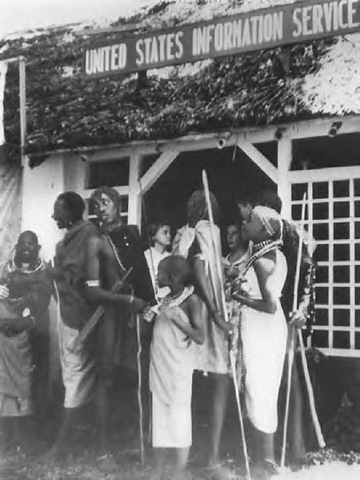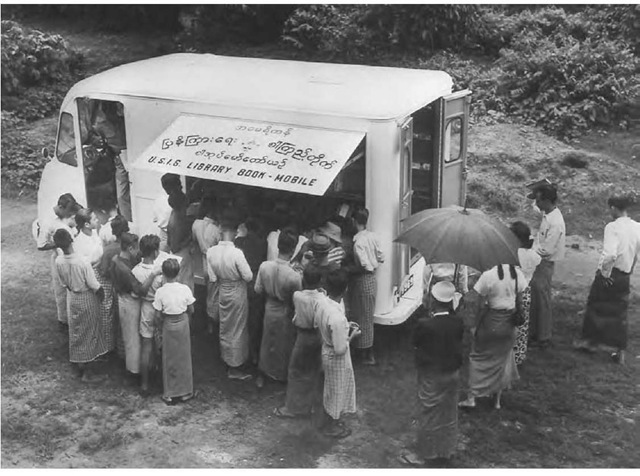America’s integrated overt propaganda agency was established by President Dwight D. Eisenhower (1890-1969) in August 1953 and operated until its reabsorption into the State Department in 1999. The USIA provided a home for the Voice of America and many other organs of U.S. propaganda, including the embassy-based United States Information Service (USIS) offices (which gave their name to all USIA operations overseas). The USIA never had control of Radio Free Europe/Radio Liberty (RFE/RL). During the administration of President Jimmy Carter (1924- ) the agency carried the alternative name United States International Communications Agency (USICA). Owing to the legislative restrictions of the Smith-Mundt Act of 1948, the USIA was never able to conduct propaganda within the United States or even to show its films without a special act of Congress; hence the agency’s work was not well known by the American people. The fortunes of the USIA were frequently linked to that of its director and, in turn, that person’s relationship to the president. Although the USIA director was not a statutory member of the National Security Council (NSC), some presidents— such as Eisenhower and Ronald Reagan (1911- )—made a point of allowing the USIA director to sit in on these meetings and participate in its deliberations, while others—such as Richard Nixon (1913— 1994)—kept the USIA director at arm’s length.
The USIA (known overseas as USIS) took pains to reach rural populations in the Third World during the Cold War. Here Masai people in Kenya wait in line to view a USIA exhibit on agriculture in 1957.
The USIA outreach techniques in rural areas included bookmobiles such as this one in Rangoon, Burma, 1953.
The USIA facilitated the worldwide distribution of magazines, books, films, radio programs, press releases, and photographs that simply would not have been circulated based on commercial demand alone. Activities included touring exhibitions, World’s Fair pavilions, language teaching, and educational exchanges. In the 1960s the agency produced highly effective documentary films dealing with such issues as civil rights (The March, 1964), the life of President Kennedy (John F. Kennedy:Years of Lightning, Day of Drums, 1964) and the Soviet invasion of Czechoslovakia (Czechoslovakia, 1968; made in 1969). Two (including the latter) won Academy Awards in the “best documentary short” category.
The following have served as directors of the agency: Theodore Streibert (195 3— 1956), Arthur Larson (1956-1957), George V. Allen (1957-1960), Edward R. Murrow (1961-1964), Carl T. Rowan (1964-1965), Leonard Marks (1965-1968), Frank Shakespeare (1969-1973), James Keogh (19731976), John Reinhardt (1977-1981), Charles Z. Wick (1981-1989), Bruce Gelb (19891991), Henry Catto (1991-1993), Joseph Duffey (1993-1999). Of these, Murrow brought with him considerable prestige as a well-known broadcaster and did much to raise the national profile of the agency. Carl Rowan and Leonard Marks found themselves struggling to explain U.S. policy in Vietnam to the world while also attempting to administer much of the media war on the ground. John Reinhardt used the agency to revitalize America’s image in the aftermath of Vietnam and Watergate by promoting a new human rights agenda. Charles Z. Wick, who benefited from being a close friend of Ronald Reagan, mobilized the agency for the second Cold War, introducing such new initiatives as the Worldnet satellite TV channel and the Radio Marti radio station for Cuba. The USIA may have become a victim of its own success. Following the end of the Cold War—hastened by the flow of agency and other media material into the Eastern bloc—the USIA seemed unnecessary. Congress needed a “peace dividend,” and in 1999 its main functions returned to the State Department under an undersecretary of state for public diplomacy.


